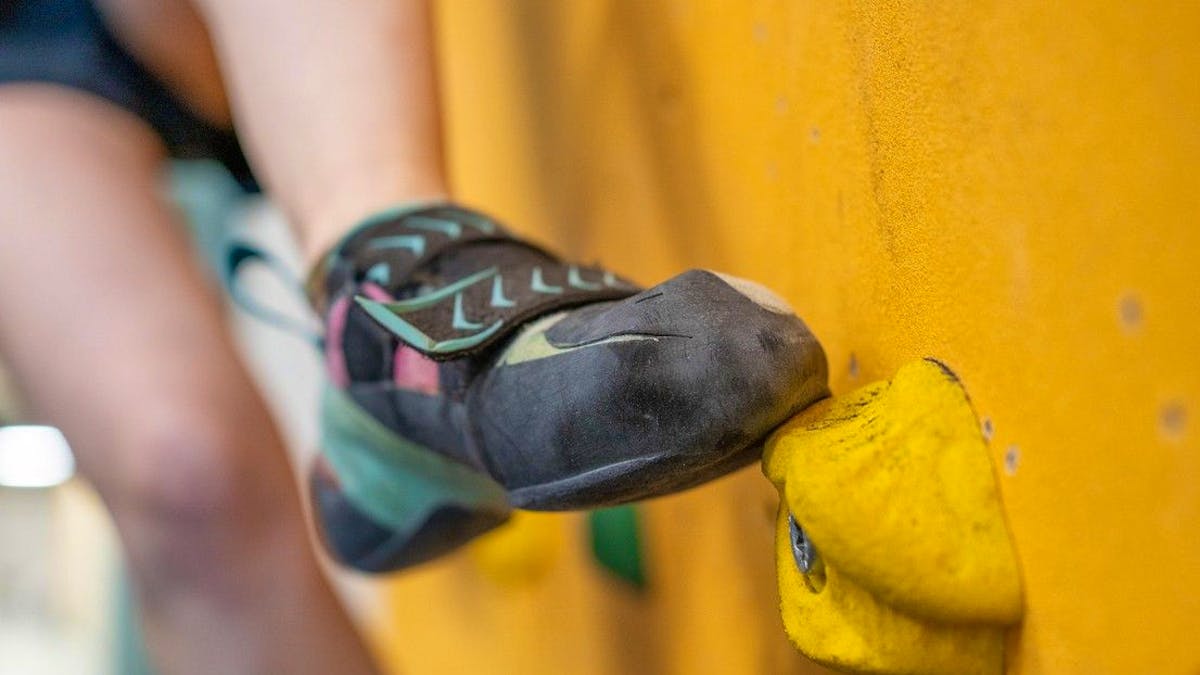When you do indoor climbing, you think you can do good for your health. This is without counting the substances present in the shoes used to practice this sport, which can ultimately enter the lungs of climbers. A recent study, conducted by scientists from the EPFL and the University of Vienna, has shown that high concentrations of potentially dangerous products, from the abrasion of the soles, can be found in the air of climbing rooms, sometimes even in higher proportions than on the outskirts of a very frequented road.
These shoes contain rubber compounds similar to those used for the manufacture of car tires – including in particular additives suspected of being toxic for human beings and the environment, communicates the EPFL. The results of this study were published in the newspaper “Environmental Science and Technology Air”.
“Like tires, climbing shoes soles are high performance products, for which additives play an essential role, allowing them to be more solid and resistant,” explains Anya Sherman, environmental researcher at the Center for Microbiology and Science of Environmental Systems (CEMESS) of the Vienna University.
The idea of two climbing scientists
Anya Sherman practices herself climbed it. During a conference, she meets Thibault Masset, researcher at the EPFL Central Central Laboratory (CEL), who not only loves climbing, but also works on similar subjects. Scientists, both first study authors, then have an idea: why not apply to the rubber of their sports shoes the same scientific method as that used in the context of their research?
“We wondered if the particles of our soles could be suspended in the air of the rooms, as do the particles of tires in an external environment,” says Thibault Masset. To find out, we have developed an analytical process inspired by that used for tire additives. ”
The researcher collected dust samples in climbing halls in Switzerland, France and Spain. He also analyzed the soles of around thirty pairs of shoes from different retailers, in order to compare their chemical composition with the particles found in climbing spaces. “These data, supplemented by those obtained in Vienna using an impactor – a device used to measure the air particles by simulating the human respiratory system – offered us an overview of the chemical compounds present and the potential exposure levels of users, users and staff.”
“The air pollution of the rooms was higher than what we thought,” reacts Thilo Hofmann, vice-director of CEMESS, at the University of Vienna, and the corresponding author of the study. The most surprising, according to him, was the observation of particularly important additive concentrations in the event of a high crowd of users at the same time in a confined space. And to conclude: “The measured levels were among the highest registered in the world and were comparable to those of the multiple roads of megalopolises”.
Substances that have nothing to do in the air
The analysis of the soles of thirty pairs of shoes made it possible to identify fifteen additives, some of which are the same as those found in car tires. This is for example the case of the 6PPD, a rubber stabilizer, which was notably associated with the death of salmon in the rivers.
At this stage, the effects on human health are still unknown. But Thilo Hofmann stresses that “these substances have nothing to do in the air that we breathe. It is therefore supposed to act before I even know the exact impact, in particular to protect the most sensitive groups, such as children ”.
Scientists note that the staff of the rooms studied has been very cooperative and has always been motivated to improve the air quality of their workplace. “This constructive collaboration will certainly make it possible to work for the creation of an indoor climbing environment as healthy as possible, thanks to the implementation of measures such as better ventilation, cleaning, as well as the design of shoes containing fewer additives,” describes Anya Sherman.
Change shoes manufacturing
“This research also aims to educate rubber manufacturers,” adds Thibault Masset. Several chemical components are now identified as potentially dangerous, their use in the manufacture of products should be suspended ”.
In order to learn more about the risks of these health substances, EPFL researchers have submitted a new research project, which they will lead to collaboration with toxicology experts. “In the meantime, I will continue to practice this sport, by favoring well-ventilated rooms and at the least frequented hours,” he concludes. These are ideal places to exercise while having fun, more particularly for the urban population, which does not easily have access to outdoor climbing. I hope that a good air quality will be maintained there and that climbers and climbers as employees and employees will be able to interact in a healthy environment ”.

